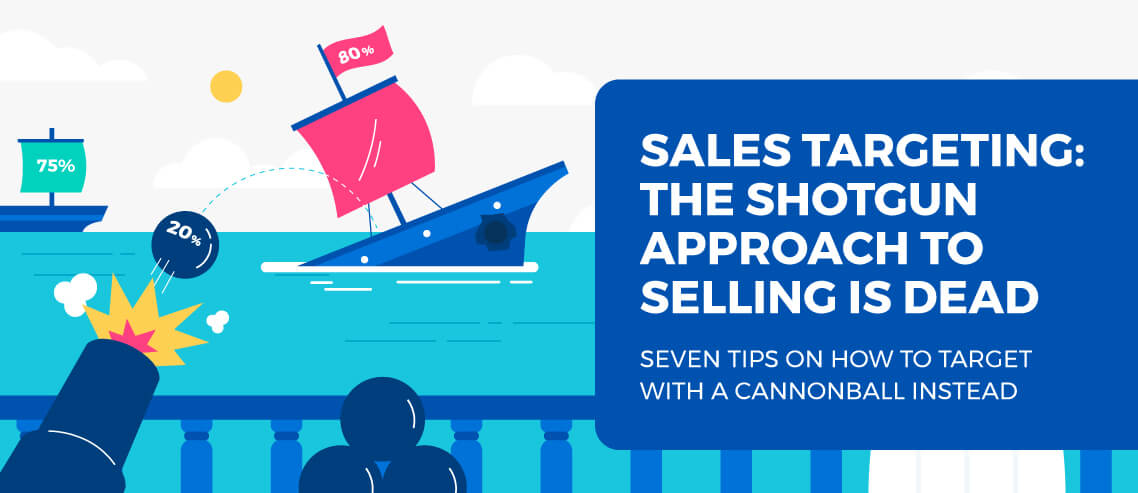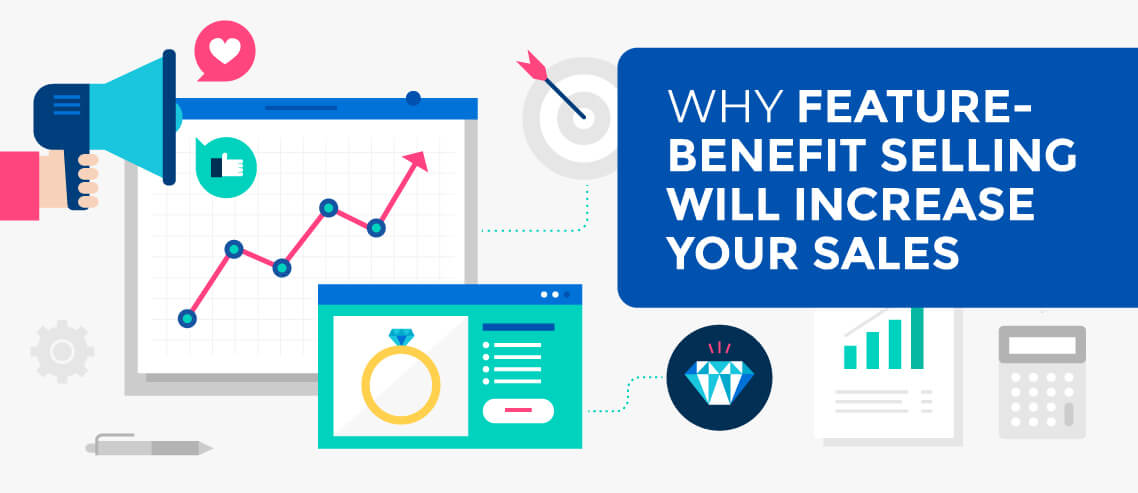15 Sales Skills Anyone Can Learn to Be a Great Salesperson
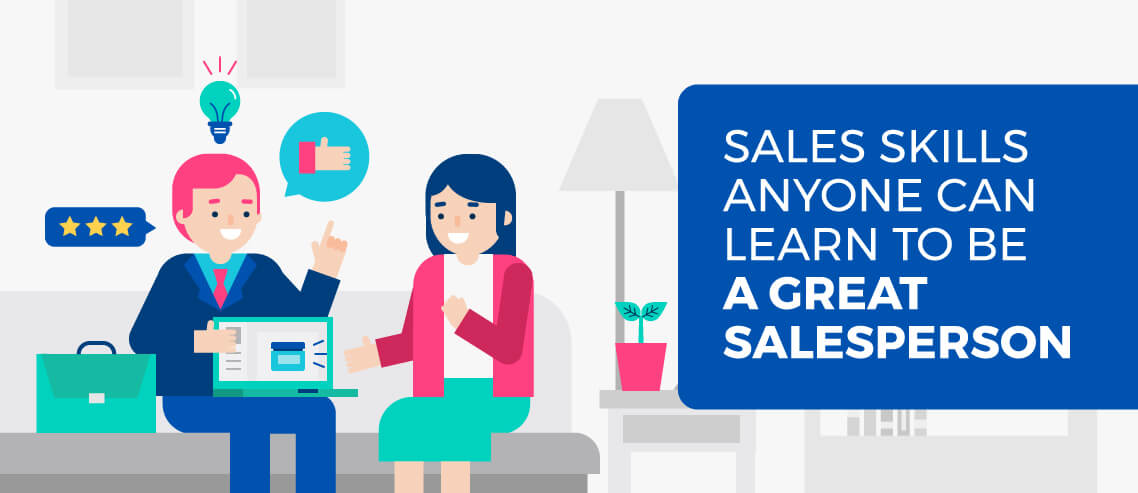
Contents
Would you call yourself a born salesperson? Have you the necessary sales skills to prosper as a sales rep? It might feel like the ability to sell is something you’re either born with or you’re not, but according to some researchers, everyone is technically “in sales.”
Sure, we’re not Ready to get started? We’ve put together a list of fifteen practical sales skills anyone can learn. Practice them, improve them, and master them all trying to find new customers to buy a product. But if you’ve ever tried to convince a kid to go to bed or a shop to give you a discount, you’ve been selling all along.
Of course, the sales skills that are needed when you actually work in sales require more targeted effort. But while we all have our own natural aptitudes, anyone can learn to become better at influencing others – which is, in essence, what selling is really all about.
These are the “soft” sales skills that have less to do with sales tactics and more to do with the way you act, and how you approach a prospect or a sale.
15 Sales Skills
- Find your comfort level
- Learn to habit stack
- Get strategic about prospecting
- Become an industry expert
- Supercharge your communication
- Stay on the radar
- Harness your empathy
- Be a team player
- Always persevere
- Learn to be flexible
- Become a master negotiator
- Foster curiosity
- Hone your organization skills
- Be a useful contributor on social media
- Keep your CRM clean
1. Find your comfort level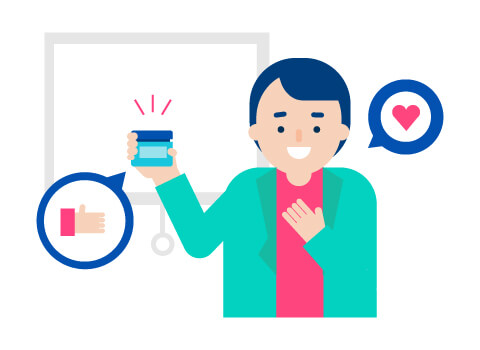
If “To Sell Is Human” author Daniel Pink is correct, everyone is a salesperson. Even so, nobody wants to come across as the stereotypical used car salesperson. Instead, you want to sell in ways that make you feel comfortable with what you’re doing (and that let you sleep easy at night).
That’s why it’s important to find your sales personality and understand what makes you proud to do your job – and what makes you feel ‘sleazy’.
How to do it
If you have to pick just one area to focus on from this article, concentrate on becoming comfortable in your sales role. You could learn every other skill on this list and then some, but if you’re an insecure, nervous salesperson, you might never have the chance to try them out.
To start, you need a product, company, or service you believe in. It’s difficult to sell something if you don’t. After all, if it’s clear you don’t really believe what you’re saying to a potential customer, why should they buy in?
So figure out what it is that excites you about your product or service, and then focus on genuinely helping people who need what it offers. If you frame your sales process in this way – helping people with problems your product can solve–- the whole thing is likely to feel much easier.
Then, practice, practice, and practice some more. With on-the-job experience and a product you believe in – and the self-confidence and authenticity that come from both – you’ll soon find that selling is something you like and are good at.
2. Learn to habit stack
To be an effective salesperson, you have to manage your time, which you can do by implementing systems into your day. Systems work especially well for sales, as the typical sales process occurs in multiple stages and responds well to compartmentalization.
Think in terms of prospect, prepare, approach, present, etc.

How to do it
Over time, systems will begin to emerge from your work. Some steps in the system will occur so frequently that they’ll become habits naturally. You probably already have some examples of this at home – for instance, maybe you always put your clean dishes away while waiting for your coffee to brew in the morning.
You have habits like this in your work too, but you can supercharge them by adopting habit stacking – basically, linking everyday habits together so that they’re always performed sequentially. You could, for instance, make it a habit to always open your CRM or email marketing system when you turn on your computer in the morning. Once that habit is established, add more layers until you have a productive daily sales routine.
This should be done gradually. But if you do it right, you’ll have multiple essential sales tasks taken care of by the time your coffee’s cool enough to drink.
3. Get strategic about prospecting
Strategic prospecting is a cross between prospecting and lead qualification. For this article, we’re defining prospecting as the process of adding possible targets to your sales funnel, and lead qualification as assessing these possible customers for suitability. The great news is that if you’re more strategic about the way you do your prospecting, you’ll have less work to manage at the lead qualification stage.
According to sales strategist and author Marc Wayshak, at least 50% of your prospects are not a good fit for what you’re selling. In the interest of becoming more efficient, learning to be laser-focused on only the 50% who are will save you both time and effort.
How to do it
Your prospecting will get more strategic through education and experience – unfortunately, there’s no real shortcut here. The more time you spend refining your process, incorporating wisdom from the greats, and reflecting on your own successes and failures, the better you’ll become at strategic prospecting.
That said, you can speed up the process using technology. There are tools on the market that will help tactically, by finding email addresses or scheduling follow-ups, for example. Adopt these into your process as you continue to refine your strategic prospecting abilities.
4. Become an industry expert
The benefits of becoming recognized as an industry expert are huge, especially in sales. Not only is your industry expertise likely to be linked to the product you’re selling (and familiarity with your product/service is an excellent way to become more comfortable in a sales role), it’ll also get you in front of new audiences and new potential clients.
How to do it
There are many routes that people have taken to become industry experts (aka, “thought leaders”). For many, it simply followed as a result of their life’s work in a certain profession, often coupled with a naturally outgoing personality. Others have actively worked to create a sense of “industry expertise” as part of their marketing efforts.
Either way, start by making sure you “talk the talk” (in other words, that you truly possess some expertise that’s of use to others). Then, look for ways to share that information with the people who need it, such as speaking engagements, blog posts, on key landing pages, interviews, and podcasts (either as a host or guest).

5. Supercharge your communication
A quick look at articles about improving sales will show you that copywriting, oral communication, and social media are all thought to be crucial to your success as a salesperson. They are, but there are two other overarching sales skills that bring these ways of communicating together and provide coherence throughout the sales process: storytelling and EQ.
Together, these two qualities offer a way to guarantee that your message is meeting its target, and that you can manage any outcome of this communication “on the fly.” After all, learning sales dialogues is one thing. Coming out on top when a potential client throws you a curveball is quite another.
How to do it
- Compelling storytelling
By improving storytelling skills, you make it more likely that your emails will be opened, your articles will be read, and your overall communication will be seen as authentic and trustworthy. Storytelling can be implemented across social media, content marketing, emails, and verbal communication. With practice, it’ll become second nature.
- EQ, or “fake it ‘til you make it”
Communication isn’t a one-way street. When it’s the client’s turn to respond, emotional intelligence (or EQ, for emotional quotient) is what’s going to better prepare you to handle that response, whatever it may be.
In an ideal world, your client will chime in with a “Sure, sign me up!” But it’s much more likely that you’re going to need to know how to respond to objections (or when it’s the right time to stay quiet). If your emotional intelligence isn’t great, seek out responses that’ll help you learn to respond to the different scenarios you’re likely to encounter as a salesperson.
6. Stay on the radar
This is a big one. Even after implementing all the sales skills discussed above, you still need to learn the art of subtly staying on people’s radar – no matter what part of the funnel they’re in, what’s happened in your recent interactions, and how busy you find yourself.
How to do it
Finding the right balance between “available” and “overbearing” can be difficult. Add this to the fact that different prospects will have different reactions to your approach no matter how you do it, and it becomes obvious that mastering this skill takes practice.
That said, there are certain behaviors that may well overstep “persistent” and place you firmly in “overbearing,” deterring your prospects from working with you.
This can include actions such as:
- Bombarding Prospect’s with relentless InMails
- Sending never-ending, automated, “catch-all” cold emails
- Calling every person in an office until you strike gold
- Persistently disregarding the explicit requests of a Prospect
But at least some of these are legitimate lead-generation techniques, right?
You’re right. These can be legitimate techniques, but with one caveat.
Consideration.
… and respect. Ok, two caveats.
Consideration and respect.
If your outreach methods fail to be considerate, don’t respect the boundaries of your prospects, and are so frequent that it drives your prospect to ask you to stop — then you’ve gone too far.
You have to use moderation. Ah, moderation… make that three caveats.
So how can you stay on the radar without overwhelming your prospects?
First, pick a strategy. You have to start somewhere, and you can always modify or abandon your chosen strategy as you gain some experience and see how it works in the real world. Pay attention to how you contact prospects, when you set your follow-up intervals, and how you process them once they’ve reached specific stages of your funnel (or reacted in a certain way to your contact attempts).
Once your strategy is working relatively well, use technology to automate as much of the process as possible. Tools like CRMs can help you manage much of the process from start to finish, while other systems that focus on specific subsets of the process – like email campaigns – can help you to stay front-and-center on your prospects’ radar.
But what should you do when prospects do say no?
We’ve all heard the same set of platitudes: “no means not yet” and “persistence pays off.”
Our advice? With utmost sincerity, simply ask, “Why?”
Asking “why” throws people. It stops them in their tracks. Sure, it might prompt some to fly off the handle, but more often than not, it’ll open the door to a whole new line of questioning.
- Were you speaking to the right person?
- Is there potential for interest?
- What information do they actually want from you?
- Should you invest more of your precious time with this particular prospect?
This will help you to establish what went wrong and how to approach this, so you can move forward in an ethical way that will preserve the relationship and save you time.
Remember: getting a “Yes” after 50 attempts doesn’t make you an unstoppable “lead-gen legend”; it just makes you a “busy fool.”
Optimize your outreach by focusing on finding the right audience. Then remember the three caveats I mentioned earlier. Be considerate, be respectful, and use moderation.
7. Harness your empathy
Empathy is one of the most important soft skills to have in your sales arsenal.
Empathy is the awareness of other people’s feelings and emotions. It allows you to understand other people’s feelings as though you were feeling them yourself.
In sales, empathy will help you fully understand the prospect’s needs and problems. It helps you understand where they are coming from, their pain points, their fears and worries. And that will increase your influence over the buyer’s decision and help guide them towards solutions that will meet their needs.
RELATED: The Top 8 Sales Methodologies to Consider for Your Business
When you approach a deal with empathy, you’re able to build genuine trust and deeply connect with the prospect.
How to become more empathic
Empathy is a skill that you need to practice every day for it to become a part of you. It does not have a switch that you can turn on and off at will. You need to constantly practice it, not only while working but in every aspect of your life.
It isn’t very difficult to start developing this skill. Here are some habits you can train yourself in to become more empathic:
Try to understand the prospect’s emotional state
The first way to develop this skill is by trying to understand the emotional state of the prospect. Pay attention to the verbal cues of the individual. What do they tell you about how the client is feeling? What kind of words do they use? Are they unsure or emotional?
Understanding the emotional state would help deepen your connection with the client.
Put yourself in their shoes
To understand what a person feels, you need to put yourself in their position. Empathy isn’t you saying “I can imagine what you feel”, but saying ” I feel what you feel”. This ability helps you create a connection and builds a foundation of trust with the prospect.
To develop this skill, imagine how you would feel if you were in the person’s position.
Listen and accept their interpretation
Salespeople are quick to try to change people’s minds. Selfishly, they need to move so quickly so they can close the deal and move on to the next prospect. Trouble is, with this approach, it’s easy to overlook the client’s views and opinions.
Ask yourself this question: Would you want to buy from someone who doesn’t try to understand where you are coming from?
Before selling, listen to the prospect. Build rapport. Not only does this help you create a connection with the prospect, it helps you optimize your sales process for future meetings.
8. Be a team player
The top 1% of salespeople are not lone wolves. It takes a team to succeed. This is especially true if you’re selling to large, complex accounts.
Not only do you need the support of other salespeople on your team, you need to be able to work cross-functionally, with people in Marketing, Product, and Customer Success.
How to become a better team player
Here are some qualities that would make you an exceptional team player:
RELATED: 7 Sales Team Motivation Strategies That Cost You Nothing
Be genuinely committed
As a good team player, you must be genuinely interested in the cause of the brand. You can’t just sit back and allow others to do the work; you actively contribute to the team’s success.
Be a problem solver
Don’t just complain about challenges. Offer solutions. In an office setting, being a problem solver can even increase your chances of getting a promotion.
Support and respect your team members
It is important to be aware of how you treat other members of your team. Remember that respect is reciprocal. Never try to shut down someone else’s ideas. Have fun, but never at the expense of others.
9. Always persevere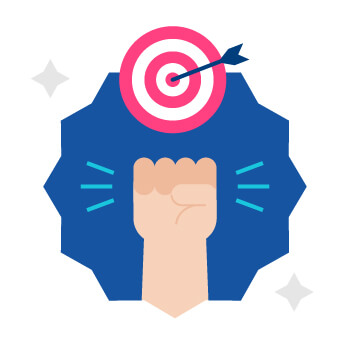
Getting rejected is part of the sales process. But top salespeople know that, and they take it in stride. They’re able to persevere through difficulties, failures, and opposition.
I cannot tell you how many times I’ve watched the new hotshot sales guy or gal come into an organization, get some easy wins, and then flame out less than 6 months later.
Let’s be honest: Any above-average salesperson can close the easy deals — the buyers that have already decided to move forward, and you’re just guiding them across the finish line.
Where do top salespeople separate themselves?
- They work their entire pipeline with ferocious tenacity.
- They have a gameplan for the easy deals AND the not-so-easy deals.
- They have pursued the prospect like a private detective, adding value through multiple touchpoints and multiple channels.
- They make sure to remind the prospect of all of the challenges they face and how their solution maps back to solving them.
- They hunt. Hard.
It’s perseverance that allows you to keep dialing or doing demos, even after a series of no’s.
It’s perseverance that drives you to continue nurturing a relationship even after a no, because you know they could introduce you to someone or make a career move that could lead to a sale.
It’s perseverance that differentiates successful salespeople from the unsuccessful, and it will help you stay the course, even when you’re discouraged or disappointed.
How do you cultivate perseverance?
Have a clear vision
The road to success isn’t easy. You need to have a mental map of the goals you want to achieve. Make sure you write them down, and post them where you can see them every day.
Handling setbacks
When facing a setback, there are three things you need to do: pause, assess, and then identify the problem. When a door closes, ask yourself, “Is it really closed?”
Remain calm as you analyze the situation. Break down the problem into smaller parts and figure out your next move. For example, why is a prospect saying no? Do they need more education on your product? Do you need to add additional features?
Taking the time to analyze the situation can help you come up with solutions that you wouldn’t have seen if you had just given up.
10. Learn to be flexible
One key quality of a successful salesperson is flexibility. Flexibility in this context is the ability to adjust to whatever a situation requires.
Each prospect is different, and you need to be able to adjust quickly to make sure your message and solution fit their needs. (This is also one of the reasons listening is so important. The prospect will tell you what they need, if you’re paying attention.)
How to become flexible
Be open-minded
It’s easier to respond to a situation if you fully understand it. Focus on relationship selling. Figure out what matters to the prospect, what their needs are, and what they’re looking for in a solution.
Stay up to date
Not only do you need to be flexible with people, you need to be able to adapt the way you work to the technology available to you. Stay up to date. Test new tools as they become available. Stay on top of the changes in your industry. And always be growing your sales skills.
Plan ahead
There is no way to know what the future folds, but you should always plan ahead. It every deal, anticipate the objections that might arise, and plan for them. Have a ready answer for the questions and concerns that are most likely to come up.
11. Become a master negotiator
Not every account is closed-won the minute you make an offer. A good salesperson knows how to effectively negotiate and find terms both you and the prospect are happy with.
It takes skillful negotiation to overcome objections and come up with creative solutions to effectively close the deal. Here’s where your natural conflict resolution and resourcefulness will shine.
How to be better at negotiating
Here are some sales skills you can master to help you get better at negotiations and protect your profit margins.
Time it right
Before you enter negotiations, you need to answer all questions and overcome all objections. By now, the only thing you should be talking about is terms. Get the agreement in principle. Then you can iron out the details of the deal.
Don’t just negotiate the price
The prospect wants to get the best deal possible, but that’s not all that they want. They want solutions, which means you can bring other things to the table:
- Add-on services
- Time to delivery
- Managed account
- Partnership
- Payment options
Make sure you understand what the customers needs, so you know the non-monetary terms can be negotiated.
Keep it equitable
The best deals give a win to both sides of the table. Don’t give away too much, but be prepared to give as much (if not more) value than you’re getting from the deal.
12. Foster curiosity
Curiosity has the tendency to take care of nearly everything else that you need to be successful in your role.
When you’re curious, you find answers.
When you’re curious, you seek out new tactics.
When you’re curious, you ask questions of other top performers.
This isn’t something to be done in the beginning of your career. It’s something to be done over your entire career. I’m nearly 20 years into my sales career, and every day I spend a much larger portion of my time asking questions than making statements.
Curiosity shows itself when you spend your time seeking out the information you need to be successful.
Are there simple questions where you can find the answer on Google? Find them. Are there resources on your company intranet that answer your question? Download them. Want to find out how the best people talk about a particular product in your bag? Hunt them down and buy them a coffee.
Curiosity is a small investment that pays massive dividends.
13. Hone your organization skills
Sales is much more of a science and much less of an art than people believe. Because of that, it’s important that, as a salesperson, you know the science behind your success.
- How many times do you need to call your prospects to book a demo?
- How quickly after you give a demo do you need to secure a follow-up meeting?
- Once a contract goes out, how quickly does your win rate go down over time?
Once you know these answers (seek them out from your manager if you don’t have them), you can start optimizing your entire sales funnel to run as effectively as possible.
But remember, the only way to stick to the sales funnel metrics you’ve defined is to be as organized as possible.
The best reps I’ve ever worked with know exactly what they are doing every single day. They are diligent about notes in their CRM, and they live both their personal and professional lives out of their Google Calendar. They never miss a meeting, a phone call, or an opportunity for follow-up.
Create your own system for staying organized. I recommend a color-coded Google calendar and phenomenal attention to detail in your CRM. When you’re managing a pipeline of 40+ deals, you’ll thank me.
14. Be a Useful Contributor on Social Media
We all know that successful sales reps absolutely must have a social media presence. With incredible prospecting and relationship building tools like LinkedIn at your fingertips – why wouldn’t you take advantage?
That said, it’s not enough to simply share any relevant content you see without comment. In fact, this could do more harm than good.
Remember: everything you share on social media should be geared towards building your personal brand.
This means out with the old, irrelevant content that’s not offering any fresh insights, and in with genuinely useful posts that will add value to your audience.
Treat LinkedIn and all of social media with respect. Create an engaging, personalized, and inviting online persona that attracts people to your brand and your company.
How? Read on for our top tips for mastering sales on social.
Create engaging graphic design
Just because you’re an expert at Canva – or other drag-and-drop Canva alternatives – doesn’t make you a creative genius. If you have access to a marketing/creative department, use it. If not, keep your designs clean and simple.
Use good spelling and grammar
No one’s saying you have to be the next Jane Austen to post an update, but take a moment to pop your text through a spell checker or one of the many free text-checking tools. Grammarly and Readable are both great, free options for social media updates.
Make the most of your existing network
Instead of harassing complete strangers to join your network or buy your product, leverage your existing network to make introductions to people outside of your network. Having an introduction is far more effective than simply hoping your random InMail/connection request will be accepted.
RELATED: 20 Steps to Optimize Your Social Profiles for Selling
Focus on relationship building, not the hard sell
Nothing will endear you less to a prospect than spouting tired old sales mantras. Social selling is less about the hard sell, and more about relationship building and consultative selling.
It’s cool to be passionate about what you do, but if just one potential client exists within your network, save it for the next sales team meeting.
Keep your content professional 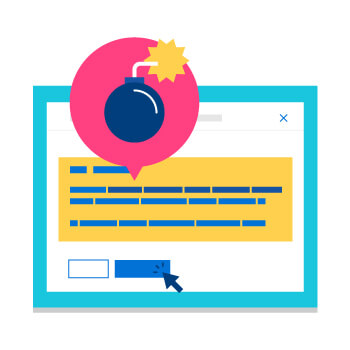
By all means, use LinkedIn to provoke thought, but that doesn’t mean you should be provocative.
Keep political, divisive, and controversial views within the confines of your head. Professional doesn’t have to mean dry content – by all means, show your personality – but it does mean avoiding causing offence.
Focus on addressing your audience’s buying motives and pain points
It might seem like a great idea to share updates straight from your company newsfeed, but few prospects care about your latest ISO audit or the new VP you hired.
Share content that speaks to the common buying motives of your prospects. Consider their pain points, and what questions they want answers to. Share client testimonials (preferably on video) as a way to pique interest. Share things that your prospects and clients care about, not just stuff that makes you or your company look good.
15. Keep your CRM clean
It’s easy to be lured into implementing every analytical bell and whistle that your CRM has to offer.
What’s the danger for sales?
Over-reliance on pointless analysis as an indicator or predictor of performance.
Companies hear that they should be doing analytics, so they track anything and everything. That’s not a huge problem in itself, but it leads to vanity metrics, data mismanagement, and analysis for the sake of analysis.
- They’re failing to establish a relevant and effective data-analysis strategy
- They’re neglecting ongoing training and coaching that drives the culture required to sustain an effective data capture strategy
- They’re failing to identify the specific data that’s of ACTIONABLE value
On top of that, all this useless data crunching is wasting your time, which IS harming your results. It could also be contributing to some wildly inaccurate forecasting (and we all know how much an MD loves a forecast).
Remember: Bad data is essentially useless.
What do we mean by this, specifically?
- “Lead” figures aren’t worth a dime unless they’re qualified
- Conversion figures are gravely unreliable if people aren’t honestly documenting their losses
- CRM reporting is only as valuable as the reliability of the data going in
- There has to be quality control
So how can you keep your data clean?
It’s all about developing good habits surrounding your CRM.
These habits should include:
- Ensure all data is in the correct format before importing into your CRM
- Only import essential data into your CRM – you don’t need every available detail in order to be able to do your job
- Flag any essential data fields so you don’t end up with incomplete records
- Perform searches for duplicates every couple of months
- Eliminate unresponsive contacts every month
It’s easy to allow keeping your CRM clean fall by the wayside when there are more time-sensitive tasks that need to be done.
However, cleaning up your CRM is a time-sensitive task – the longer you’re working with bad data, the more your results will be skewed, and the more time you’ll be wasting.
So make these habits a regular part of your working week by blocking out some time in the calendar for a regular CRM spring clean.
Great salespeople are made, not just born
Some of us are born salespeople. The rest of us need to put in some effort to bring our natural ability up to the level at which we can compete. Start by adding the tips from this list into your daily routine until they become habitual. For example, make practicing better communication an everyday habit by stacking it with habits you already have, as part of your daily schedule.
Rather than only thinking about improving concrete or tactical sales skills (for example, knowing how to use a certain software tool), focus on mastering your mindset. In time, learning this and other strategic sales skills will turn you into a sales-generating rockstar.



